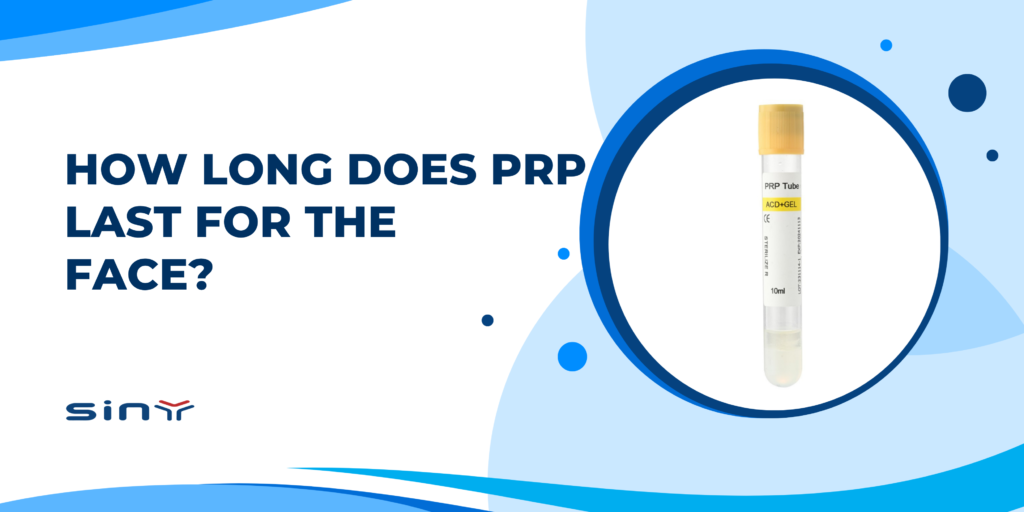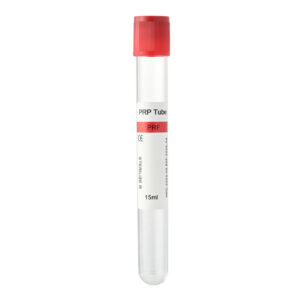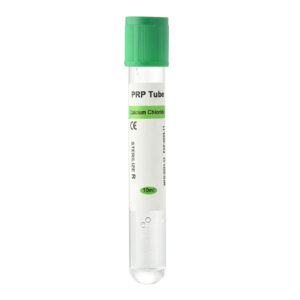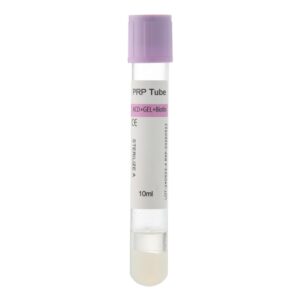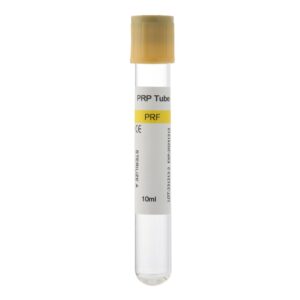How long does PRP last for the face? Platelet-Rich Plasma (PRP) therapy has firmly established itself as a cornerstone of modern aesthetic medicine, prized for its natural, regenerative capabilities. For clinics, medical professionals, and distributors in the aesthetics field, the central question from patients is often: “How long does PRP last for the face?” While the straightforward answer is typically 6 to 18 months, this timeframe is not absolute. The longevity of PRP facial rejuvenation is a complex interplay of patient biology, treatment protocol, and, most critically, the quality of the PRP preparation itself.
What Influences PRP Efficacy?
To appreciate how long PRP effects last, one must first understand the biological process it initiates. PRP therapy is not a temporary fix like neurotoxins or some dermal fillers; it is a bioregenerative treatment that harnesses the body’s own healing mechanisms. When platelet-rich plasma is introduced into the skin, the concentrated platelets release a cascade of powerful growth factors. These bioactive proteins are the command signals for tissue repair and regeneration. They stimulate fibroblasts to synthesize new collagen and elastin, the essential proteins that provide skin with its structure, firmness, and elasticity.
This regenerative process unfolds over time. While patients may notice an immediate glow or improved hydration post-treatment, these are short-term effects. The true, lasting results—smoother texture, reduced fine lines, and improved skin tone—emerge over several weeks to months as the new collagen framework is built. The peak of this rejuvenation is often seen around three to six months after the initial course of treatment.
However, this new collagen is still subject to the body’s natural aging process, as well as environmental and lifestyle factors. PRP therapy effectively turns back the clock, but it doesn’t stop it from ticking. Therefore, the results are long-lasting but not permanent. The key to maximizing the duration of these aesthetic improvements lies in both leveraging the patient’s unique biological response and meticulously controlling every possible variable within the clinical setting.

Key Variables in PRP Facial Rejuvenation
The variability in PRP longevity can be categorized into two main areas: patient-dependent factors and practice-controlled factors. While clinicians have little influence over the former, mastering the latter is what separates satisfactory results from exceptional ones.
Patient-Dependent Factors:
- Age and Genetics: A younger patient with robust cellular machinery will typically respond more vigorously and enjoy longer-lasting results than an older individual. Genetic predispositions also play a role in skin quality and aging.
- Skin Condition: The baseline health of the skin matters. PRP can achieve remarkable results on photodamaged skin or skin with fine lines, but the duration may vary based on the severity of the initial condition.
- Lifestyle: Factors like sun exposure, smoking, diet, and stress significantly impact skin health and the longevity of any aesthetic intervention. Patients who adhere to a healthy lifestyle and a diligent skincare regimen will invariably sustain their results for longer.
Practice-Controlled Factors:
- Treatment Protocol: A single PRP treatment is often insufficient. Clinical data support an initial series of 3-4 treatments, spaced 4-6 weeks apart, to build a strong collagen foundation. Following this, a maintenance session every 6-12 months is crucial for prolonging the effects.
- Practitioner Technique: The skill of the medical professional, including the depth of injections and the precision of the application (whether used with microneedling or as direct injections), significantly influences the outcome.
- PRP Quality and Concentration: This is arguably the most critical factor that a clinic can control. The principle “not all PRP is created equal” is a clinical reality. The therapeutic efficacy of the treatment is directly proportional to the concentration of viable platelets and growth factors in the final injectate. A low platelet concentration will yield a suboptimal biological response, leading to disappointing and short-lived results. This is where the choice of your PRP preparation system becomes paramount.
Selecting the Right PRP Tubes
Choosing high-quality PRP tubes is a guarantee for a perfect treatment.
Here’s what defines a high-quality PRP tube and why it matters for longevity:
- Optimal Anticoagulant: The tube must contain an anticoagulant, like ACD-A or Sodium Citrate, that effectively prevents clotting without damaging the platelets themselves. Preserving platelet integrity is essential for ensuring a potent release of growth factors upon injection.
- Advanced Separator Gel: A high-quality thixotropic separator gel forms a clean, stable barrier between the platelet-rich plasma and the red blood cells during centrifugation. Ineffective separation can lead to contamination with red blood cells, which can diminish the regenerative effect and increase inflammation.
- Sterility and Material: PRP tubes must be sterile and made from medical-grade materials that do not interact with the blood components. This prevents contamination and ensures patient safety.
Using a subpar or generic blood collection tube can result in lower platelet concentrations, poor purity, and inconsistent outcomes. For distributors, supplying clinics with unreliable products can damage reputations. For clinicians, it means unpredictable patient results and a revolving door of dissatisfied clients. Partnering with a reliable supplier that provides meticulously engineered products, like the systems from Siny PRP, is a foundational step in delivering predictable and long-lasting patient outcomes. To offer your patients the best, you must start with the best. Explore our range of high-efficiency PRP tubes on the Siny PRP product page to see how we can enhance your clinical results.
FAQs
1. How long does PRP for the face really last?
The visible results of PRP facial treatments typically last between 6 and 18 months. This duration is influenced by the patient’s age, lifestyle, and skin condition, as well as the treatment protocol and the quality of the PRP used.
2. How many PRP sessions are needed for the face?
For optimal and lasting results, a series of 3 initial treatments spaced 4 to 6 weeks apart is generally recommended. After this initial series, maintenance treatments are advised every 6 to 12 months to preserve the regenerative effects.
3. When will patients see the final results from a PRP facial?
Patients often notice an immediate improvement in skin radiance. However, the primary, long-term benefits from collagen stimulation develop gradually. Significant improvements in skin texture, firmness, and tone become most apparent 3 to 6 months after the treatment course is completed.
4. Can patients do anything to extend the results of their PRP facial?
Absolutely. The longevity of PRP results can be extended by adhering to a maintenance treatment plan as recommended by the clinician. Additionally, a diligent at-home skincare regimen, consistent use of broad-spectrum sunscreen, a healthy diet, and avoiding smoking can significantly prolong the benefits.
5. Does the quality of the PRP tube really make a difference in the outcome?
Yes, it is one of the most critical factors. The quality of the PRP tube—including the type of anticoagulant and the effectiveness of the separator gel—directly impacts the final concentration and purity of the platelets. A higher concentration of pure platelets leads to a more robust release of growth factors, resulting in more significant and longer-lasting skin rejuvenation.
Summary
In conclusion, while the 6-to-18-month timeframe is a good benchmark, the true longevity of a PRP facial is in your hands. By establishing robust treatment protocols and, most critically, investing in a premier PRP preparation system, you can consistently deliver the durable, high-quality results your patients expect. This commitment to quality not only enhances patient satisfaction but also solidifies your practice’s reputation as a leader in regenerative aesthetics. To learn more about how Siny PRP can become a trusted partner in your practice’s success, contact our team today.

